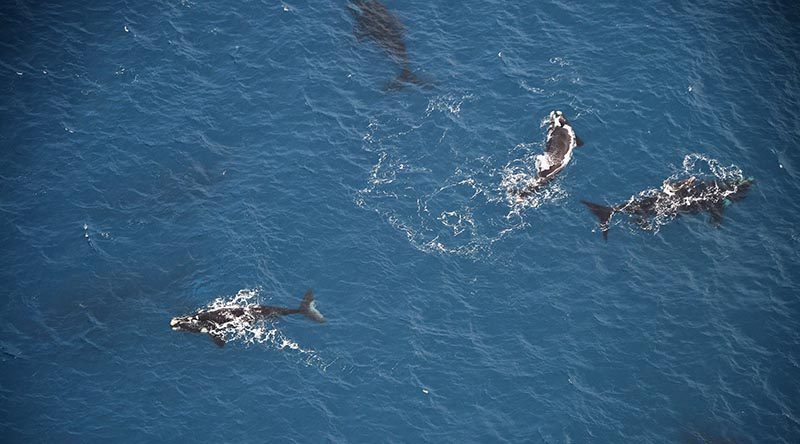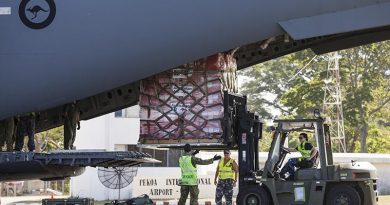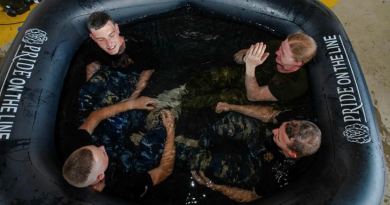NZDF assists in whale census

The New Zealand Defence Force works with other New Zealand agencies to secure the country against external threats and is called upon regularly to respond to emergencies at home and overseas – but, in what may seem off the beaten track, the NZDF recently carried out a census of southern right whales, or tohora, in the New Zealand Sub-Antarctic Islands.
CAPTION: The New Zealand Defence Force recently deployed a Royal New Zealand Air Force P-3K2 Orion aircraft to carry out a census of southern right whales in the New Zealand Sub-Antarctic Islands. More than 100 whales were sighted during the surveillance patrol. NZDF photo.
Air Commodore Tim Walshe, the Air Component Commander, said more than 100 whales were sighted during a surveillance patrol by a Royal New Zealand Air Force P-3K2 Orion aircraft at Auckland Islands and Campbell Island.
“We regularly support other government agencies in their work by providing our aircraft and ships as platforms for monitoring and surveillance activities,” Air Commodore Walshe said.
“In this Orion patrol, we took aerial photos to assist the Department of Conservation (DOC) in tracking individual whales, building a better picture of the species as a whole and monitoring the recovery of these protected species.”
DOC Manager Marine Species and Threats Ian Angus said the census results indicated that the southern right whale population, which is classified as “nationally vulnerable”, was continuing to recover from the significant impact of whaling and other present-day threats.
Whaling decimated the southern right whale population, from more than 30,000 at the turn of the 20th century to less than 150 about 1920, according to DOC. Their number was estimated at 2000 in 2009.
“We’ve always known that the southern right whales spend the winter and spring around the Sub-Antarctic Islands but getting down there at this time of the year is challenging,” Mr Angus said.
“In partnership with the NZDF, we have been able to monitor some of our wildlife and continue to understand when and how southern right whales are using the Sub-Antarctic Islands.”
The census conducted by the NZDF complemented the work carried out by the University of Otago on the movement patterns of southern right whales, he said.
“We’re looking forward to working with the NZDF and other researchers to glean all the information from the many images that were taken.”
Tohora are a native migrant to New Zealand. They are typically black but can have irregular white patches, and have large, paddle-shaped flippers.
.
.
.
.
.
.

.
.





